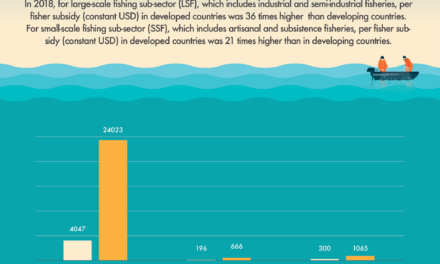by Anil Netto, PENANG, Malaysia, Mar 22 (IPS)
Selling water rights to private institutions and then having people buy them back again is an issue that keeps rearing its ugly head at every World Water Day, which falls on Mar. 22. Goaded by international financial institutions and corporate interests, regional governments are pressing ahead with plans for more private participation in water services. And yet all across Asia, water privatisation schemes are failing to deliver clean and safe drinking water to communities, despite forcing consumers to pay for a basic human right. ''If you look for a water privatisation arrangement that works … I cannot think of any,'' Manila-based Mary Ann Manahan, a researcher with Focus on the Global South, told IPS in a telephone interview.
In contrast, the sterling performance of some major publicly managed water utilities in Asia has demolished the argument that private sector participation is the only way to improve efficiency. Cities like Osaka, Phnom Penh and Penang, where water is publicly managed, have outperformed Jakarta and Manila, two cities with massive privatisation arrangements in several key sectors.
Osaka, for instance, has a non-revenue water level (NRW) – an indicator of the level of unaccounted water and lost income due to leakages and unpaid bills – of seven percent. This is an outstanding performance.
Phnom Penh records an NRW of 26 percent and Penang a commendable 19 percent. In comparison, Jakarta has NRW of 51 percent and Manila 62 percent. The British-owned Thames Water Plc and the French operated Suez- Lyonnaise respectively operate the largest water privatisation schemes in Jakarta and Manila.
The Public Services International (PSIRU), based in Britain, which analyses the privatisation and restructuring of public services around the world, revealed in a recent study that Sri Lanka's capital Colombo, where water is publicly managed, has a water leakage level of only 23 percent compared to a leakage level of 35 percent for the city of London covered by Thames Water Plc. ''There has been an extremely high failure rate for private concessions and long-term BOT (Build Operate Transfer contracts) which may get worse if Suez and Thames leave their contracts in Manila and Jakarta,'' said the study.
And yet, privatisation schemes are being pushed with vigour by international financial institutions such as the World Bank and the Asian Development Bank, coupled with lobby groups such as the Global Water Partnership and the World Water Council. Manahan points out that the World Bank has increased its lending on water projects from 546 million U.S. dollars in 2002 to three billion U.S. dollars in 2005.
''But there is no clear indication that this has led to cleaner, more affordable water for people on the margins,'' she said.
In addition, the European Union has come up with initiatives in the World Trade Organisation to prise open national water services to the big foreign players. Indeed, since the mid-1990s, developing countries have been coaxed to privatise water services through 'public-private partnership' or private sector participation.
But many of these schemes in Asia have had disastrous results: soaring water tariffs, unmet targets, and crippling financial losses and debt.
Faced with embarrassing results, several Western multinationals that once thirsted for water privatisation projects in Asia have tried to make a quick exit from loss-making or problem- saddled privatisation agreements in Asian countries. Instead, they are now restricting themselves only to sure-fire problem-free projects or 'safer' markets like Japan and South Korea.
Critics of water privatisation complain that it tends to focus on urban consumers whereas the vast majority of those who most need water live in rural areas. Worse, privatised water operations are diverting water in rural areas to urban centres, said Kuala Lumpur-based economist Charles Santiago, coordinator of Monitoring Sustainability of Globalisation. ''They do this in two ways: by actually channelling water meant for rural areas into urban areas and by ground water mining in rural areas (for use in producing) bottled water, which is largely consumed in urban areas,'' he told IPS.
The experience in cities across Asia and elsewhere is that when multinationals enter the scene or when private participation is introduced, water tariff rates invariably soar.
For instance, in Manila, the government touted water privatisation as the solution to a looming water crisis in the Philippines. ''They promised there would be no price hikes in water for five years,'' points out Manahan. ''But within three years, they filed for tariff increases.''
Instead of the promised lower rates, Maynilad Water Services, which holds Manila's west zone concession, raised tariffs by as much as 400 per cent between 1997 and 2003. Manila Water Company, the east zone concessionaire, raised water tariffs by 700 percent in the same period.
When Manila's privatised arrangements failed, the eventual 'solution' by the Philippine government was 'rehabilitation'. But Manahan prefers to call a spade a spade. ''It's a bailout,'' she said starkly.
But civil society groups are making their voices heard. In Manila, they have filed a petition in court to oppose the ongoing 'rehabilitation', arguing that it is against public interest and would only burden consumers and taxpayers. In Thailand, thousands of workers protested against the government's privatisation policy in early 2004 – though the Thaksin-led administration has since reiterated its plans to press on with privatisation.
In Malaysia, a newly set up Coalition Against Water Privatisation, made up of 26 civil society groups, is opposing the government's plan to privatise even more publicly owned water utilities in the country. Manahan has her own solution to the dilemma facing many Asian governments. The Focus on the Global South researcher points to the example of Porto Alegre, Brazil. Water services in Porto Alegre were private until 1904, then the city took it over.
In the participatory budget process the city people get together in meetings throughout the year and decide where the investments of the Municipal Department of Water and Sanitary Sewage are going to be made. Between 1989 and 1996, the number of households with access to water services rose from 80 percent to 98 percent, while the percentage of population served by the municipal sewage system rose from 46 percent to 85 percent. ''My bias would be to call for a democratisation in decision-making on how water should be managed in the community,'' said Manahan.
''Water is such a basic need, it should remain in the hands of the public.'' (END/2005)








